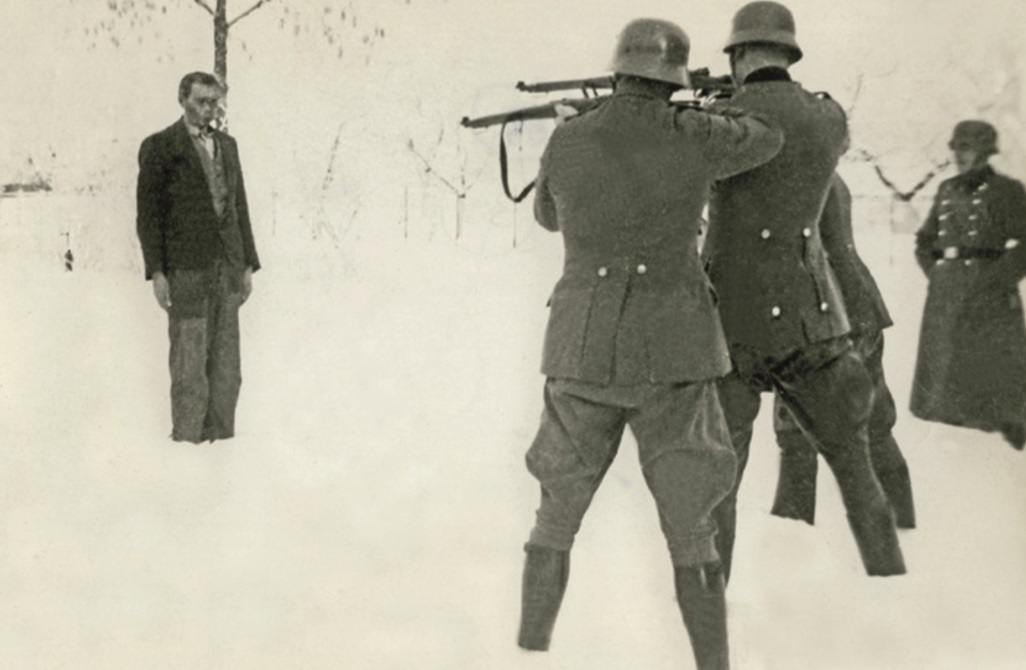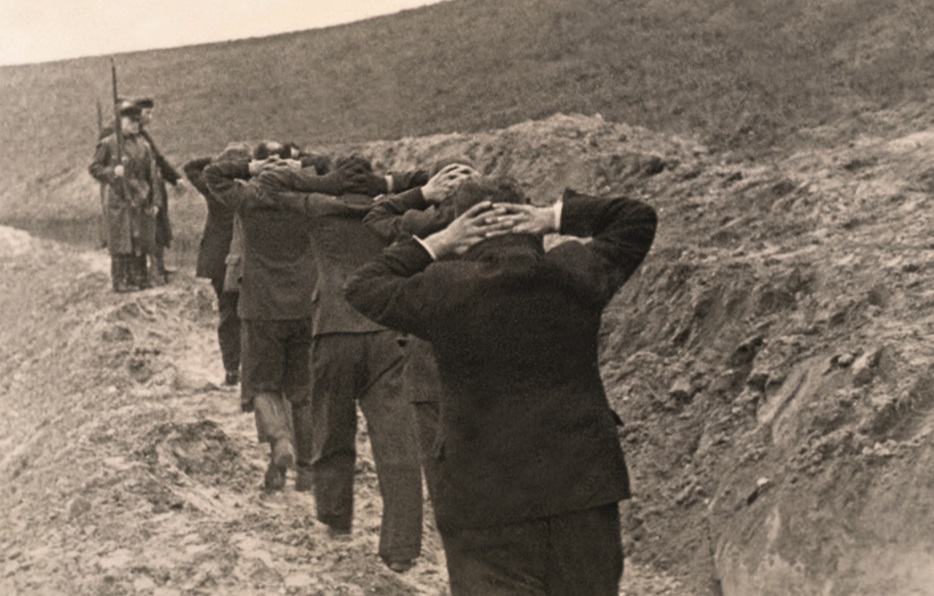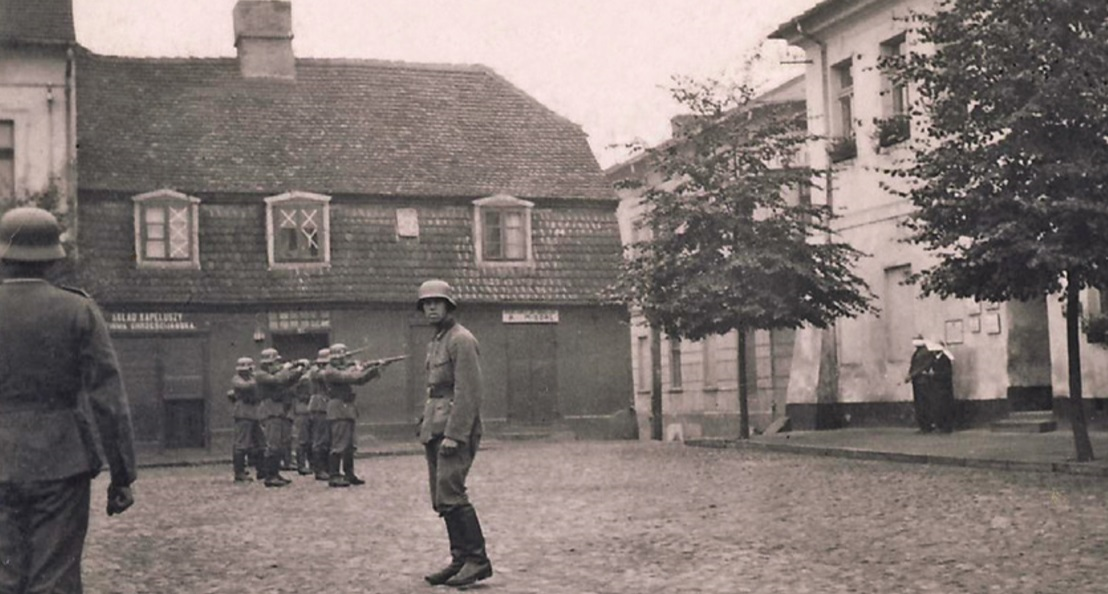-What did your father do during the war?
- He was lucky enough not to had been sent to the front. He served in a reserve Wermacht company at Hannover. In the kitchens.
- Like everyone – commented Boznański.
- It was an especially large kitchen with especially huge number of people.
- Yes, I’ve been travelling across Germany for so many years and never have I met any relatives of the officers of the SS who served in Warsaw, first slaughtered 200 thousand people in a few weeks, then burned the entire city down, and finally took Wyczółkowski as a souvenir so their grandchildren could erase the signatures a few decades later and, with the help of some experts, earn a proper coin for holidays in Thailand.
Such dialogue between a Polish and German art dealer can be found in the latest thriller by Zygmunt Miłoszewski, entitled Priceless. The novel tells the story of a search for the Portrait of a Young Man by Raphael, the number one on the list of Polish war losses1.
I’m quoting this fictional conversation, because it paints a remarkably accurate picture of the memory and emotions of part of our society regarding the German war crimes committed at the Polish lands during the Second World War. The next stages of this phenomenon I would describe as a pendulum of memory which balances between the crimes committed by the two totalitarian regimes which divided Poland among them in September of 1939. The German crimes we call the forgotten crimes, while the Soviet ones – the mendacious crimes.
The Nuremberg Trials and cold winter
Both occupiers broke the rules of the 4th Hague Convention from 1907 which described the rules of land war and the governance of conquered and occupied territories.
Contrary to the Soviets, the Germans lost the war and were brought to criminal responsibility for their crimes. However, in the post-war trials only some of the criminals were judged and sentenced.

The International Court Martial in Nuremberg, processing since November 20th 1945, judged Hans Frank, the General Governor of part of the Polish lands. As one of the main criminals he was sentenced to death in 1946. Other architects and perpetrators of German occupying policies in Poland stood before the Supreme National Tribunal created on January 22nd, 1946. It’s worth noting Arthur Greiser, the governor of Reichsgau Wartheland, sentenced to death several months before Frank. During his trial, the judges pointed out a certain double nature of the German soul: “No other nation can combine cruelty and elements of virtual kindness in its family and private lives.”2 Greiser was executed on July 21st, 1946 in front of the gathered crowds in what came to be the last public execution in Poland. The Supreme National Tribunal sentenced to death more Nazi criminals, among others Ludwig Fischer, the former head of the Warsaw district as well as several of his assisting officers and Albert Forster, the former governor of the Gdańsk-Western Prussia region.
Most of the Germans responsible for murdering the Polish population have never had to stand trial. According to Andrew Nagorski, the author of the novel Nazi Hunter:
Following […] the allied trials, the German courts began treating the wrongdoings of the accused as single murders. It was incredibly difficult to document. That is why there were so little cases and why such a small number of people paid the price for what they had done during the war. The number of those who were put on trial, sentenced to death or imprisoned for their actions is a small percentage compared to the scale of the operation.3
Kidnapping of Eichmann
Many German criminals hid after the war to avoid punishment. The example of SS-Obersturmbannführer Adolf Eichmann, one of the most active architects of the “final solution to the Jewish question” during all its stages, is one exceptionally spectacular. He was also the main organiser of the forced Polish relocations. He never directly participated in the executions, although he witnessed many of them. He was a typical “perpetrator from behind the desk”. At the end of the war, he hid himself and then fled to Argentina. Information regarding his whereabouts came to light by complete accident. They were found by Fritz Bauer, a western German prosecutor. He gave the case to the Israeli authorities, pressing them to take actions. Eichmann, caught in 1960 and abducted by the Israeli intelligence, stood before a court in Jerusalem. His trial, made loud by the media, was the first confrontation of the public opinion of the world with the Holocaust on such a scale. Eichmann answered for his participation in the murder of Jews, but the indictment also included other crimes against humanity. Point 9 (in the “crimes against humanity” category) mentioned the “deportation of half a million Polish civilian population from their place of living in order to settle Germans in their place”. Eichmann was executed by hanging and his ashes were scattered in the sea.

A father of German historiography
German scholars, creating a pseudoscientific base for the crimes on the Polish population, were left almost entirely unpunished. The prime example of this would be the story of Theodor Schieder, a historian and member of the NSDAP party since 1937, who prepared a memorial The matters of relocation and nationality policies at the recovered lands for the needs of SS Reichsführer Heinrich Himmler and his Reich’s Commissariat for Strengthening Germanness. He was an associate of the gauleiter of Eastern Prussia, Erich Koch in terms of population policy at the occupied Polish lands. After the war, he was positively verified in a trial and became a professor at the Colony in 1948. He is considered to be one of the founding fathers of contemporary German historiography. One of his areas of expertise became documenting the “escapes and relocations” of the German population which took place by the end of the war and immediately after it.
Scientific research and collective memory
During the Communist era the pendulum of memory tipped more towards the German crimes. For more than half a century no one was allowed to speak about the Soviet aggression from September 17th, 1939, the German-Soviet alliance, the Katyń massacre, the mass deportations to the east and the depolonisation of the Borderlands. In turn, a historical policy was introduced which consequently shaped the social identity of the Polish population on the basis of remembering German crimes. However, the story was under strict control of the official, state narration. Such matters like the annihilation of the state-shaping elites of the Second Republic of Poland, fate of the Polish landlords and aristocracy and forced relocation of the last remnants of the “privileged classes” were simply omitted. Some details regarding the deportations of Poles from the lands taken by the Third Reich were also excluded, since it would be necessary to mention the German-Soviet cooperation during the ethnic exchange from various parts of occupied Poland. The subject of the Polish Underground State (more often described as “the resistance”) and conspiracy was strictly censored. Edward Serański wrote Greater Poland under the shadow of the Svastika which originally counted 1200 pages. After censorship the book came out with half of that number, in the year 1970. Due to similar reasons, no full list of the material and personal war losses came out.
By the end of the Communist era, the politically narrowed down knowledge and historical education, rooted in the times of Gomułka and Gierek, had already taken a form of a state ritual which – maybe apart from the veteran communities and their families – lacked any authentic social interest.
